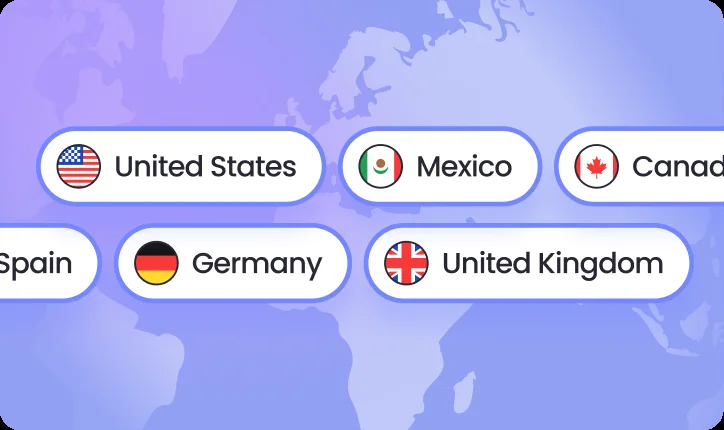Key Takeaways

Payroll cycle: Employers in Canada typically process payroll on a weekly, biweekly, semi-monthly, or monthly schedule, with biweekly being common.

Tax filing: Income tax, CPP/QPP, and Employment Insurance withholdings are usually remitted to the CRA or Revenu Québec on a regular schedule, often monthly or more frequently for larger employers.

Employer taxes: Employer contributions include CPP/QPP, EI premiums, and provincial levies where applicable, calculated as percentages of employee earnings.

Tax year: Canada’s tax year follows the calendar year, from January 1 to December 31.

Payroll processing methods: Payroll is commonly managed in-house using software or outsourced to providers familiar with federal and provincial payroll rules.
Understanding and complying with payroll and employment tax regulations in Canada is essential for both small business owners and larger enterprises. Employers need to be aware of various taxes, including income tax withholding, Canada Pension Plan (CPP) contributions, Employment Insurance (EI) premiums, and, in certain provinces, additional levies such as health taxes. Managing these payroll taxes can present challenges, and non-compliance may lead to penalties and strained employee relations.
This article aims to guide readers through key aspects of payroll taxes in Canada, covering calculations, deadlines, and filing procedures. It's important to note that tax laws and requirements can vary depending on factors such as location, income, or business size.
Fiscal Year in Canada
1 January - 31 December is the 12-month accounting period that businesses in Canada use for financial and tax reporting purposes.
Payroll Cycle in Canada
The payroll cycle in Canada is usually bi-monthly, with employees being paid before 15th and by the end of month.
Bonus Payments in Canada
Canada does not have any legislation that mandates the provision of a 13th salary.
In Canada, employers must adhere to different types of payroll taxes, each with its own regulations.
Income Tax Withholding
Employers are required to deduct federal and provincial income taxes from employees' wages. This system ensures that employees' tax obligations are met throughout the year, reducing the likelihood of large tax payments at year-end. Failure to withhold and remit these taxes accurately and on time can result in penalties and interest charges.
Canada Pension Plan (CPP) Contributions
The CPP is a mandatory pension plan that provides retirement, disability, and survivor benefits. Both employers and employees contribute to the CPP. Employers must match employees' contributions, calculated as a percentage of pensionable earnings. Remittances are typically due monthly, and late payments can incur penalties and interest.
Employment Insurance (EI) Premiums
EI provides temporary financial assistance to unemployed Canadians. Both employers and employees contribute to EI premiums. Employers' contribution rates are generally higher than those of employees. Accurate calculation and timely remittance of EI premiums are crucial to avoid penalties.
Setting up payroll correctly is vital to ensure compliance with legal requirements and to maintain employee trust. Employers should:
- Register for a business number and a payroll program account with the Canada Revenue Agency (CRA).
- Determine the correct amounts to withhold for income tax, CPP contributions, and EI premiums.
- Keep accurate records of all payroll transactions.
Example Calculation
Consider an employee earning a gross salary of $1,000 per week. The payroll deductions would include:
- Federal and Provincial Income Tax: Calculated based on the employee's total income and applicable tax credits.
- CPP Contribution: A percentage of the employee's gross income, up to an annual maximum.
- EI Premium: A percentage of the employee's gross income, up to an annual maximum.
Employers can use the CRA's Payroll Deductions Online Calculator (PDOC) to determine exact deduction amounts.
Submitting Payroll Tax in Canada
Employers can submit payroll taxes to the CRA using various methods:
- Online: Through the CRA's My Business Account portal.
- Pre-Authorized Debit: Setting up automatic withdrawals from the business's bank account.
- Financial Institutions: Making payments in person at a bank or credit union.
- Mail: Sending a cheque or money order directly to the CRA.
Payroll Tax Due Dates in Canada
Understanding the tax obligations for both employers and employees is crucial when operating in Canada's business landscape. Payroll contributions include deductions for income tax, CPP contributions, and EI premiums, which directly affect both employer costs and employee take-home pay.
Employers are responsible for calculating and remitting these contributions accurately. While employees see deductions from their wages, employers also incur additional costs, such as their share of CPP and EI contributions. These contributions help fund essential government programs, including pensions and unemployment benefits, providing long-term security for workers.
Managing payroll contributions effectively requires staying informed on current tax rates, deadlines, and remittance processes. Utilizing payroll management software can help businesses streamline payroll processing and ensure compliance with Canadian tax regulations.
Employer Tax Contributions
Employer payroll contributions are generally estimated at an additional 7.78% - 8.24% (varies by province) on top of the employee salary in Canada.
Employee Payroll Tax Contributions
In Canada, the typical estimation for employee payroll contributions cost is around 7.28% - 8.542% (varies by province).
Individual Income Tax Contributions
In Canada, employees are subject to federal taxation ranging from 14.5% to 33%, determined by their income bracket. Additionally, provincial taxes, which vary across the provinces, are imposed on top of these federal taxes.
Pension in Canada
The Canada Pension Plan retirement pension is a monthly taxable benefit that serves as an income replacement for retirees aged 60 and above. To qualify, individuals must have made at least one valid contribution to the CPP, which can stem from their work in Canada or be credited from a former spouse or common-law partner. Both employees and employers in Canada and Quebec are required to contribute to the pension plan at a rate of 5.95% for CPP and 6.40% for QPP.
Disclaimer
THIS CONTENT IS FOR INFORMATIONAL PURPOSES ONLY AND DOES NOT CONSTITUTE LEGAL OR TAX ADVICE. You should always consult with and rely on your own legal and/or tax advisor(s). Playroll does not provide legal or tax advice. The information is general and not tailored to a specific company or workforce and does not reflect Playroll’s product delivery in any given jurisdiction. Playroll makes no representations or warranties concerning the accuracy, completeness, or timeliness of this information and shall have no liability arising out of or in connection with it, including any loss caused by use of, or reliance on, the information.
.svg)
.svg)
.svg)







.svg)



.png)

.webp)









.svg)